For decades, American muscle cars have stood as the loudest symbols of freedom, raw power, and rebellion on the open road. The deep growl of a V8 engine once meant dominance, but not every muscle car carried that legacy proudly. Some wore the badge of strength yet delivered only disappointment. These models looked fierce in advertisements and on showroom floors but collapsed under the weight of poor engineering, weak performance, or misguided corporate decisions.
The oil crisis of the 1970s, tightening emission laws, and the rush to cut costs all played a part in creating a generation of cars that promised thunder and delivered a whisper. Among the legends of speed, these are the ones that fell short of their names. In this list of the Worst Muscle Cars Ever, we revisit those tragic chapters of American car history that remind us how even icons can fail when vision fades and performance dies.
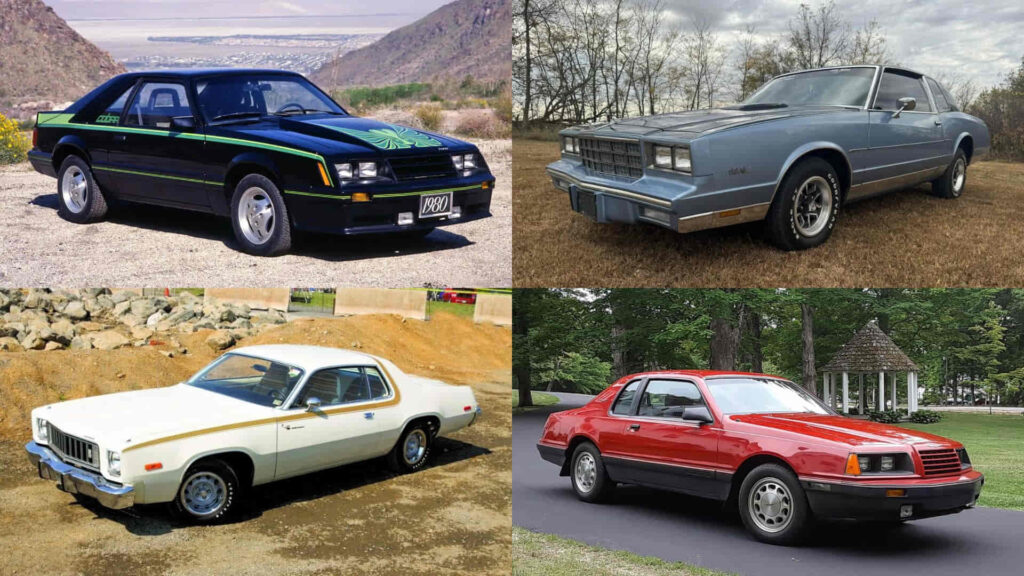
Contents
- Selection Criteria
- 1974 Ford Mustang II
- 1982 Pontiac Firebird
- 1978 Dodge Challenger
- 1980 Chevrolet Camaro Berlinetta
- 1976 AMC Matador Coupe
- 1975 Plymouth Road Runner
- 1982 Ford Thunderbird Turbo Coupe
- 1979 Oldsmobile 442
- 1981 Chevrolet Monte Carlo
- 1980 Ford Mustang Cobra
- What Went Wrong With Muscle Cars
- The Legacy of Failure: What We Learned
- Conclusion
Selection Criteria
Defining what makes a car one of the Worst Muscle Cars Ever requires more than just looking at horsepower numbers. A true muscle car is not only about speed but also about the feeling it gives when the engine growls and the tires bite into the asphalt. When that promise of emotion and energy is broken, the disappointment goes far beyond the spec sheet.
Each model in this list was chosen because it failed to deliver on the core identity that made American muscle cars legendary. Some looked intimidating but hid weak engines beneath their aggressive hoods. Others suffered from heavy bodies, poor engineering, or the compromises of an era dominated by emission restrictions and rising fuel prices. In some cases, the betrayal came from within, when iconic names were reused on cars that no longer deserved them.
These are not simply underpowered vehicles; they are stories of lost ambition and misplaced confidence. Every car here represents a moment when passion was replaced by practicality, when innovation gave way to hesitation. That is why they stand together as the most disappointing chapter in the history of American performance.
1974 Ford Mustang II
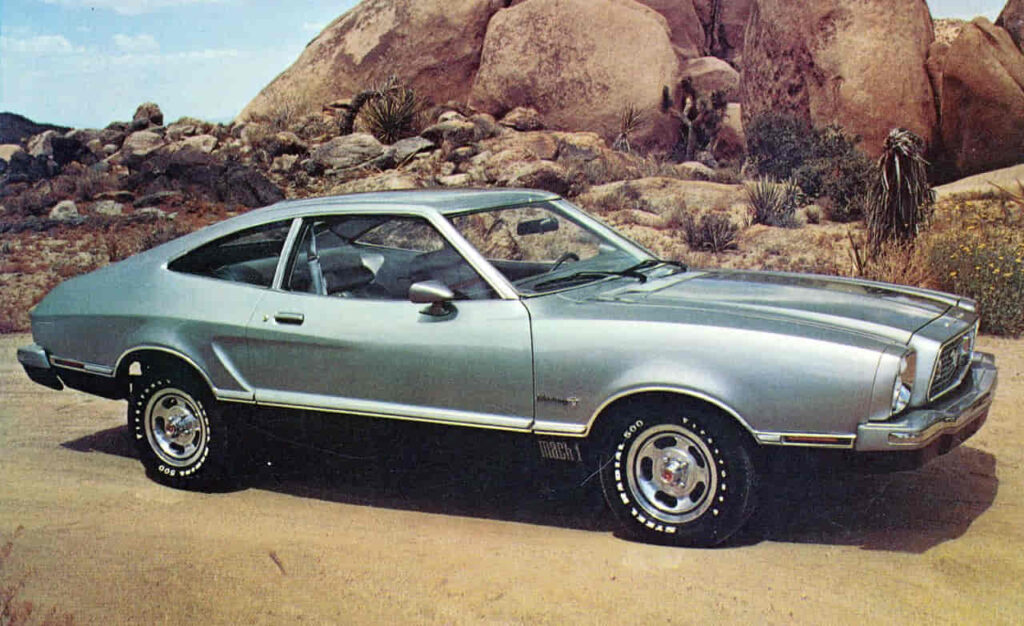
When the second generation of the Ford Mustang appeared in 1974, it did not roar onto the scene the way its predecessor had. Instead, it rolled in quietly, smaller, lighter, and far less aggressive than the car that once defined the American muscle dream. Born into the shadow of the oil crisis and smothered by new emission standards, the Mustang II was the answer to a question no true car enthusiast had asked. It was efficient, modest, and entirely unworthy of the legacy it carried.
Under the hood, the disappointment deepened. The base model offered a weak four-cylinder engine with barely more than ninety horsepower, while even the optional V6 and V8 versions felt strained and uninspired. Gone was the thrilling acceleration, the deep growl, the sense of untamed energy. In its place came economy and compromise, words that had no place in the muscle car vocabulary.
To many, the Mustang II became the ultimate symbol of Detroit’s surrender during a difficult decade. It sold in respectable numbers, but it never won the hearts of purists. For fans who remembered the 1960s glory days, this car marked a painful turning point. Among the Worst Muscle Cars Ever, the 1974 Mustang II stands as the moment when the legend of the pony car nearly faded into silence.
1982 Pontiac Firebird
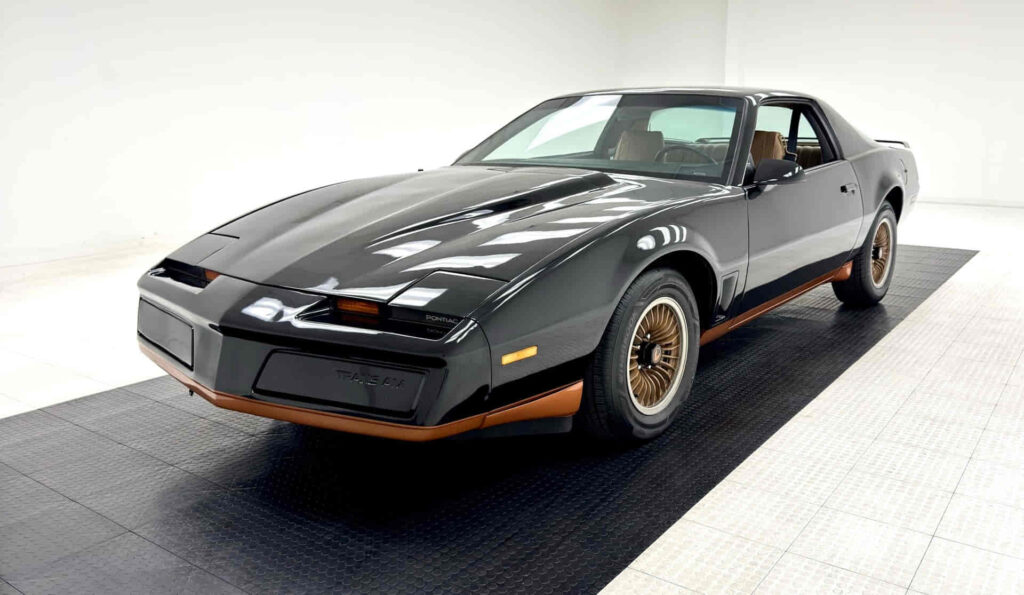
The 1982 Pontiac Firebird was born in an era obsessed with style over substance. Its sleek, aerodynamic body promised speed and aggression, yet the illusion ended the moment the key turned in the ignition. Underneath the sculpted hood sat a small four-cylinder engine known as the Iron Duke, producing a mere ninety horsepower. It was a number that would have been laughable for a car bearing the Firebird name only a decade earlier.
Pontiac tried to reinvent the Firebird for a new decade, giving it sharp lines, pop-up headlights, and a futuristic image. It looked like the future of performance but drove like a past mistake. The lightweight body could not hide the lack of power, and the once-celebrated roar of Pontiac’s V8 heritage had been reduced to a faint whimper. Even the later V6 and V8 options failed to bring back the excitement that had once made the Firebird a true rival to the Camaro and Mustang.
In the story of American muscle cars, the 1982 Firebird represents how manufacturers lost touch with the meaning of performance. It is remembered today as one of the Worst Muscle Cars Ever because it embodied the hollow promise of early 1980s design, where appearance triumphed over adrenaline and the soul of the muscle car was traded for style without strength.
1978 Dodge Challenger
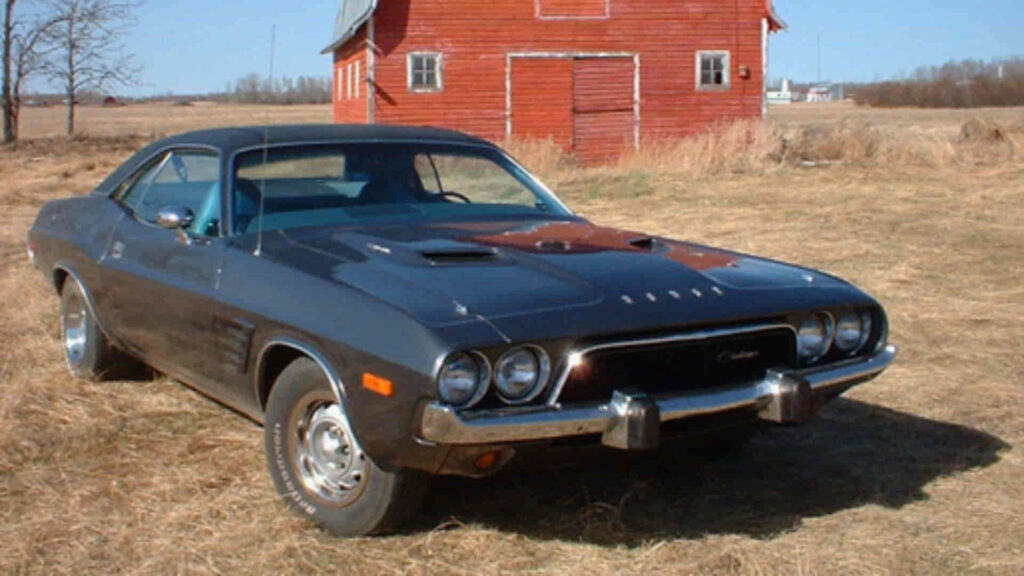
By the late 1970s, the once mighty Dodge Challenger had become a stranger to its own name. The original model had embodied everything that defined the muscle car movement — raw energy, aggressive styling, and the thunder of big-block engines. But the 1978 Challenger was something entirely different. It was not a product of Detroit muscle engineering but a rebadged Mitsubishi Galant Lambda, imported from Japan and stripped of the soul that made the Challenger a legend.
The car’s compact size and modest four-cylinder engine were designed to meet changing fuel economy demands, not the expectations of American enthusiasts. With barely a hundred horsepower, it offered none of the power or presence that the Challenger badge promised. The sleek lines hinted at sportiness, yet the driving experience felt timid and disconnected. It was a car trying to wear a costume it did not deserve.
For loyal fans, this version of the Challenger represented a complete identity crisis. It showed how far automakers were willing to go to chase new markets at the cost of their heritage. The name survived, but the spirit did not. The 1978 Dodge Challenger remains one of the Worst Muscle Cars Ever, a reminder that no amount of branding can hide the absence of muscle beneath the metal.
1980 Chevrolet Camaro Berlinetta
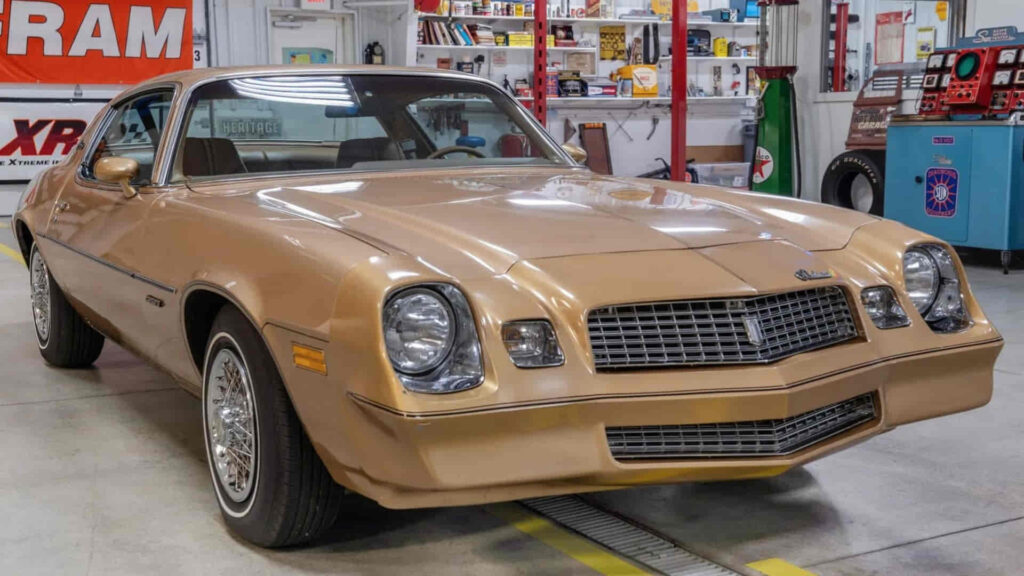
The name Camaro once meant unfiltered power and youthful rebellion, but by 1980 that image had faded into the smog-filled haze of a struggling automotive era. The Chevrolet Camaro Berlinetta was introduced as a more refined and luxurious version of the car, yet refinement was the last thing muscle car fans were looking for. The Berlinetta traded aggression for glamour, performance for plush interiors, and raw power for a quiet, uninspired drive.
Beneath its sculpted hood sat an engine that barely reached one hundred and fifteen horsepower, a far cry from the roaring V8s that had defined the Camaro’s golden age. The heavy body and softened suspension turned what was once a street fighter into a sluggish cruiser. Chevrolet had built a car that looked confident but felt exhausted, weighed down by emission standards, cost-saving engineering, and a corporate fear of risk.
The 1980 Camaro Berlinetta became a symbol of how the spirit of American performance was being reshaped into something unrecognizable. It was elegant to look at but empty to drive, the kind of car that broke hearts quietly. Among the Worst Muscle Cars Ever, it stands as proof that style without substance can be more disappointing than failure itself.
1976 AMC Matador Coupe
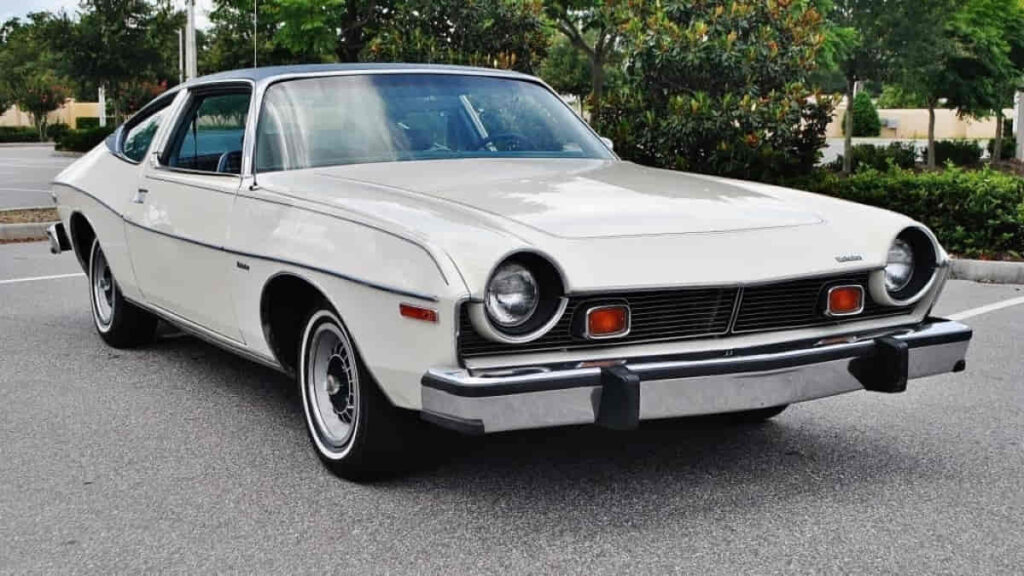
The 1976 AMC Matador Coupe was a car that seemed to struggle with its own identity. American Motors wanted it to stand out in a crowded field of muscle-inspired cars, yet what emerged was something awkward and misunderstood. The Matador looked bold with its long hood and distinctive front end, but its beauty was polarizing, more bizarre than breathtaking. Underneath that dramatic design lay a heavy body and an uninspired engine that failed to live up to the promises of its appearance.
The standard V8 engine produced modest power at best, barely enough to move the car’s weight with confidence. It lacked the punch, the excitement, and the personality that defined true muscle cars of the previous decade. Inside, the Matador offered comfort and quirky styling cues, but nothing could disguise its sluggish handling or its lack of emotional connection with the driver. It was a car that tried to be everything at once and ended up being nothing remarkable.
The Matador Coupe has earned its place among the Worst Muscle Cars Ever not because it was completely unworthy, but because it symbolized the confusion of an entire era. It showed how automakers were losing touch with what made muscle cars powerful in both spirit and sound. The result was a car remembered more for its odd design than for any sense of performance.
1975 Plymouth Road Runner
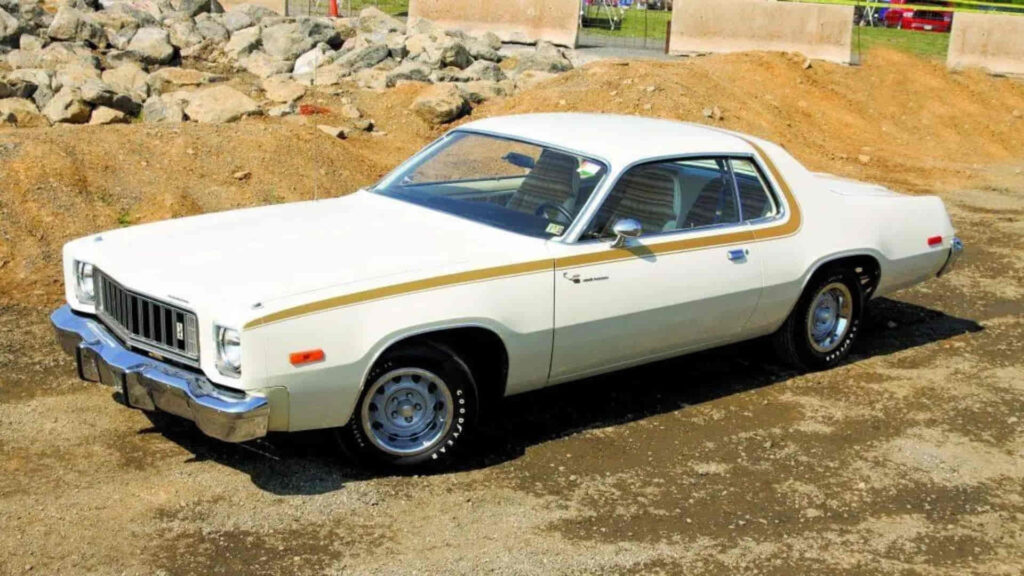
Few names in the muscle car world carried the same sense of excitement as the Plymouth Road Runner. In its prime, it was a symbol of pure, unfiltered fun — a car that blended power, humor, and attitude. But by 1975, that spirit had nearly vanished. The oil crisis had forced manufacturers to tame their wildest machines, and the Road Runner became a victim of those changing times. What was once a lightweight, roaring beast had transformed into a heavy, soft-edged cruiser that seemed more concerned with compliance than with speed.
Under the hood, the disappointment was unmistakable. The once-mighty 426 Hemi and 440 V8s were long gone, replaced by a small 318 cubic inch engine producing only around 145 horsepower. The sound was muted, the acceleration sluggish, and the thrill absent. The cartoon bird still graced its fenders, but the “beep beep” now felt like a whisper from a forgotten era. Even the design, while clean, lacked the aggression that made earlier models so iconic.
The 1975 Road Runner is remembered among the Worst Muscle Cars Ever because it marked the exact moment when performance gave way to practicality. It was not a bad car by ordinary standards, but for a name built on adrenaline and rebellion, it was a heartbreak. The legend had survived in name, yet the fire that once defined it had burned out completely.
1982 Ford Thunderbird Turbo Coupe
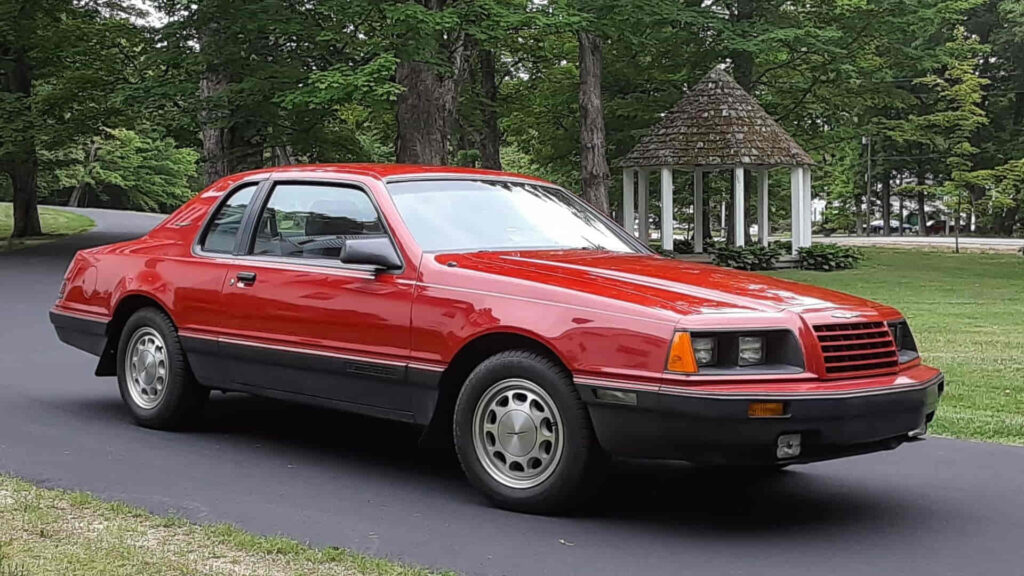
When Ford reintroduced the Thunderbird in the early 1980s, it tried to capture the future of performance with technology instead of displacement. The 1982 Ford Thunderbird Turbo Coupe arrived with futuristic ambition, wearing aerodynamic lines and powered by a turbocharged four-cylinder engine. On paper, it sounded innovative, a modern solution to the fading era of big V8s. But behind the sleek design and bold promises, the car failed to deliver what the Thunderbird name had always stood for — effortless power and refined strength.
The turbo engine, while advanced for its time, suffered from severe lag and reliability issues. Drivers who expected smooth acceleration and instant torque were met instead with hesitation and frustration. The suspension tuning felt uncertain, and the handling lacked the balance to match its sporty image. It was a car caught between two worlds, trying to please regulators with efficiency while pretending to thrill enthusiasts with speed. In truth, it did neither very well.
The 1982 Thunderbird Turbo Coupe remains one of the Worst Muscle Cars Ever because it represents the confusion of its time. Ford wanted to reinvent performance through innovation but forgot that true muscle comes from emotion, not just engineering. The result was a car that promised excitement and delivered hesitation — a futuristic failure wrapped in a beautiful disguise.
1979 Oldsmobile 442
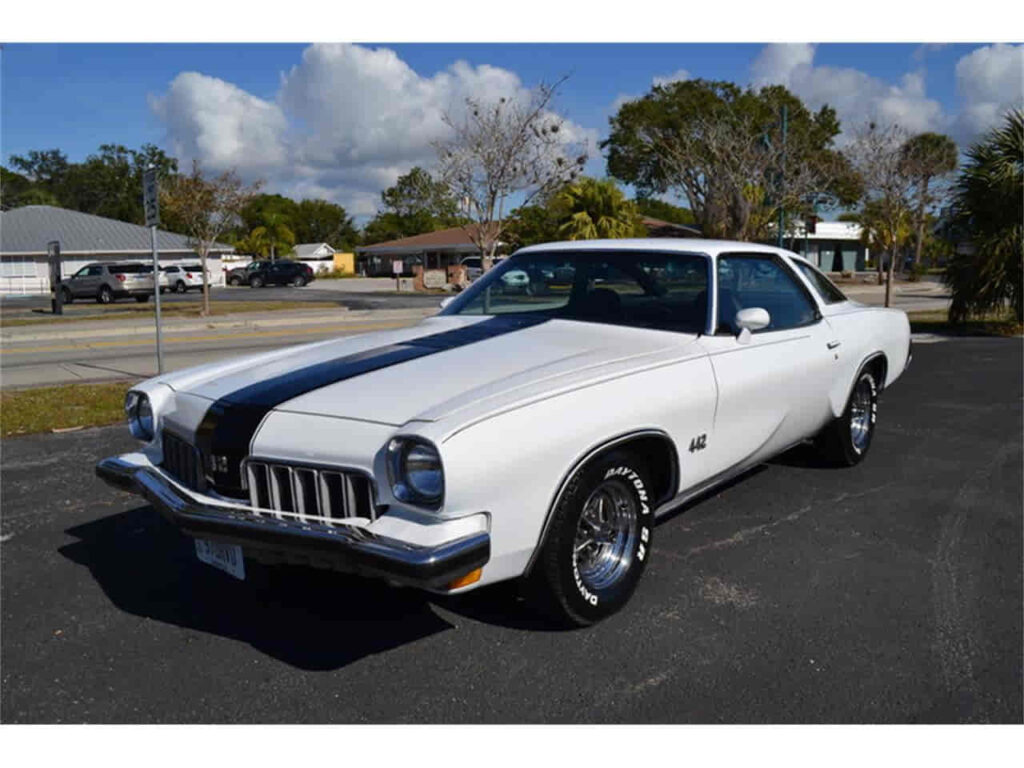
The Oldsmobile 442 once carried a name that demanded respect. In the late 1960s, it stood proudly beside the GTO and Chevelle as a symbol of speed and American confidence. But by 1979, that legacy had become little more than a decal on a tired body. The numbers that once defined the name — four-barrel carburetor, four-speed transmission, and dual exhaust — had lost all meaning. The 442 of this era was a badge without substance, a name without muscle.
Under the hood, a small V8 produced barely 160 horsepower, struggling to move a car that had grown heavier and less dynamic. It was quiet, uninspiring, and stripped of the performance spirit that had once made it a street legend. The styling tried to maintain the illusion of power with bold stripes and chrome accents, but nothing could hide how far the 442 had fallen from grace. Even loyal fans of the brand found it difficult to defend what the car had become.
The 1979 Oldsmobile 442 belongs among the Worst Muscle Cars Ever not because of one major flaw, but because it represents the erosion of identity that plagued the American car industry in the late 1970s. It reminds us that when heritage is used as decoration rather than purpose, even great names can fade into mediocrity.
1981 Chevrolet Monte Carlo
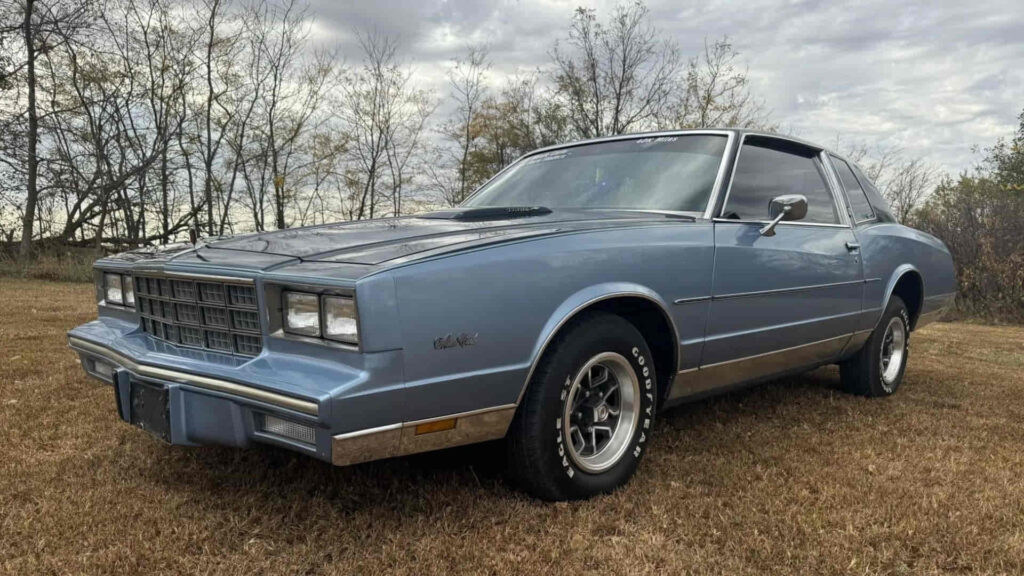
The Chevrolet Monte Carlo began as a stylish expression of American confidence, a car that mixed elegance with the muscle of a powerful V8. But by 1981, that image had faded into quiet disappointment. The Monte Carlo had evolved into a luxury coupe that looked sophisticated yet felt lifeless behind the wheel. The body remained beautiful with its long hood and smooth proportions, but the heart that once defined it had been replaced by hesitation and compromise.
The base model came with a modest 3.8-liter V6 engine that produced just around one hundred and ten horsepower. Even the optional V8 did little to revive the thrill that Monte Carlo drivers once expected. The suspension was soft, the steering vague, and the acceleration forgettable. It was a car that cared more about comfort than character, a vehicle designed to glide rather than growl. The shift from power to plushness reflected a broader decline in what muscle cars had come to represent by the early 1980s.
Among the Worst Muscle Cars Ever, the 1981 Monte Carlo holds a special place because it symbolizes a brand that chose to chase luxury at the expense of performance. It reminds enthusiasts that beauty without energy can never be true muscle. The car looked the part but lacked the passion, turning what could have been a revival into a quiet retreat from greatness.
1980 Ford Mustang Cobra
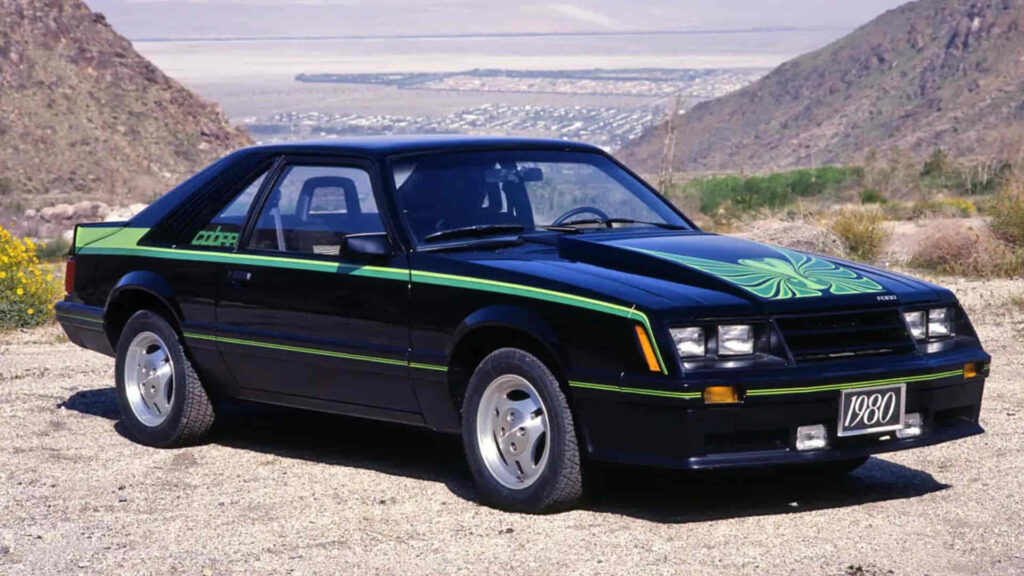
The Ford Mustang Cobra was meant to sound like redemption. After years of disappointment, the Cobra badge promised to bring back the bite that the Mustang had lost. Yet when the 1980 version arrived, it carried little more than a name and a few stripes meant to evoke power that no longer existed. The car looked fierce with its hood scoop and sporty graphics, but beneath the surface it was painfully weak, a hollow echo of the roaring machines that once defined the muscle car era.
The so-called Cobra engine, a 4.2-liter V8, produced only around one hundred and nineteen horsepower, barely enough to justify the badge. Acceleration was slow, the sound uninspiring, and the driving experience forgettable. It was a car built during a time when performance was sacrificed to meet fuel and emission regulations, but that truth did little to ease the frustration of enthusiasts who expected more from Ford’s most famous name. The Cobra name, once feared and respected, had been reduced to a marketing tool.
The 1980 Ford Mustang Cobra tops the list of the Worst Muscle Cars Ever because it represents the ultimate betrayal of identity. It had the look of aggression but none of the strength, the name of a predator but the soul of a commuter. It stands as a painful reminder that even legends can lose their way when passion gives in to practicality.
What Went Wrong With Muscle Cars
To understand why the Worst Muscle Cars Ever came to exist, one must look beyond the cars themselves and into the shifting world that shaped them. The late 1960s had been the golden age of power, a time when American streets echoed with the thunder of big-block engines and an attitude that celebrated excess. But by the mid-1970s, that roar began to fade. The oil crisis struck like a lightning bolt, forcing manufacturers to chase fuel economy instead of horsepower. At the same time, new emission laws strangled engines that had once been symbols of freedom.
Automakers found themselves trapped between regulation and reputation. They had built their identities on speed and aggression, yet the political and economic climate demanded restraint. To survive, they began redesigning their icons, shrinking engines, cutting compression, and marketing efficiency as the new kind of performance. What followed was a wave of cars that wore the look of muscle but lacked its essence. Even the names — Mustang, Camaro, Charger — became shadows of what they once represented.
In that period of compromise, the connection between driver and machine weakened. Cars no longer inspired, they merely functioned. The tragedy of the Worst Muscle Cars Ever lies in how they reflect a loss of vision. They were not built by engineers chasing passion but by corporations chasing survival. It was the end of an era when American cars were more than transportation — they were identity, noise, and rebellion turned into metal and fire.
The Legacy of Failure: What We Learned
Every failure leaves a lesson, and the Worst Muscle Cars Ever taught the industry more than any success story could. They revealed the limits of nostalgia and the danger of relying on legacy alone. In chasing efficiency, automakers learned how fragile identity could be when stripped of passion. What was once a proud roar became a hesitant whisper, yet within that silence grew a determination to rebuild. The disappointment of the 1970s and early 1980s became the spark for a new generation of engineers who refused to let the muscle car die.
As technology advanced, the mistakes of the past became blueprints for the future. Fuel injection replaced carburetors, turbocharging evolved from gimmick to art, and emissions no longer meant weakness. By the 2000s, names like Mustang, Camaro, and Challenger had reclaimed their power, proving that performance and responsibility could coexist. The rebirth of the muscle car was not just mechanical but cultural — a reminder that strength without soul is meaningless.
In the end, these forgotten failures became the foundation for modern legends. The Worst Muscle Cars Ever may have embarrassed their brands in their time, but they forced innovation, humility, and a return to purpose. They taught carmakers that true muscle is not defined by size or sound but by authenticity and emotion — two things that no regulation can ever silence.
Conclusion
Looking back at the Worst Muscle Cars Ever, one thing becomes clear — even the strongest legends can stumble when the road changes beneath them. These cars were born in difficult times, built by companies trying to survive in a world that no longer valued raw power. They looked bold, carried names once spoken with pride, yet behind the chrome and the badges, they revealed how fragile greatness can be when vision fades.
But within that failure lies the beauty of evolution. Each disappointing model reminded carmakers and fans alike that performance is more than horsepower, it is the connection between driver, machine, and emotion. The mistakes of the past became lessons for the future, paving the way for the modern era of American muscle — one where power meets precision and nostalgia meets innovation.
Today, when enthusiasts celebrate the return of true muscle cars, they do so with the memory of these failures in mind. They are cautionary tales written in steel and smoke, proof that even icons must sometimes fall to rise again. So which one do you think deserves the title of the worst muscle car ever?